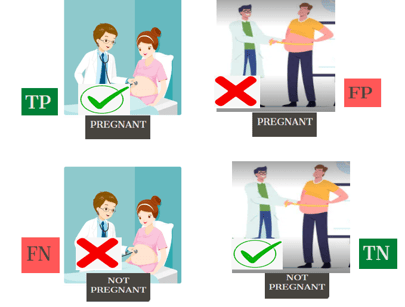Artificial intelligence computer vision has opened the doors to many applications, from facial recognition and autonomous vehicles to medical diagnostics and quality control in manufacturing. However, even amidst its revolutionary potential, computer vision isn't without its limitations. One of the crucial aspects to grasp when delving into the intricacies of computer vision is understanding the concepts of false positives and false negatives, which lie at the heart of the technology's accuracy and reliability.
Defining Computer Vision
Computer vision is a subfield of artificial intelligence (AI) and machine learning (ML) that enables computers to extract meaningful information from visual data, such as images and videos. It seeks to replicate human vision and perception by processing and understanding the visual world. The ultimate goal of computer vision is to equip machines with the ability to interpret, understand, and make decisions based on visual inputs, thus enabling them to "see" and comprehend the environment like humans do.
Ground Truth
To measure the accuracy and performance of a computer vision system, we often refer to the concept of "ground truth." Ground truth is the actual, correct, and manually annotated information about a particular object or attribute in an image. It serves as a reference point against which the results generated by a computer vision algorithm are compared.
False Positives and False Negatives
In the context of computer vision, false positives and false negatives represent the two sides of a critical performance trade-off. These terms describe the errors that occur when a computer vision algorithm incorrectly identifies or fails to identify an object or attribute in an image. The confusion matrix is the table of potential outcomes of any classification algorithm, such as the classification of labels in computer vision object detection.
 Illustration of the "Confusion Matrix"
Illustration of the "Confusion Matrix"
Misclassification
Misclassification in computer vision refers to the erroneous categorization of objects or attributes in an image by a machine learning algorithm. It encompasses both false positives and false negatives, encompassing instances where the algorithm mistakenly assigns an object or attribute to the wrong category or fails to assign it to the correct category. Misclassification can stem from various factors, including inherent complexities in the visual data, variations in lighting conditions, occlusions, and the inherent limitations of the algorithm itself. Striving to reduce misclassification is a central goal in computer vision, as it directly influences the system's accuracy, performance, and its ability to make informed decisions based on visual input.
False Positives
A false positive occurs when a computer vision algorithm mistakenly identifies an object or attribute in an image that is not actually present in the ground truth. In other words, the algorithm generates a positive result when it shouldn't have. For instance, in a medical imaging scenario, a false positive might lead to a healthy region being flagged as cancerous, potentially causing unnecessary concern and medical procedures for the patient.
False Negatives
Conversely, a false negative arises when the computer vision algorithm fails to identify an object or attribute that is actually present in the ground truth. This means the algorithm generates a negative result when it should have been positive. Continuing with the medical example, a false negative could result in a cancerous region being overlooked, leading to a delayed diagnosis and treatment.
True Positives and True Negatives
To complete the picture, let's explore the concepts of true positives and true negatives:
True Positives:
A true positive occurs when the computer vision algorithm correctly identifies an object or attribute that is present in the ground truth. This is a correct and accurate detection. In a security application, a true positive would be the correct identification of a person's face for access to a building.
True Negatives:
A true negative happens when the computer vision algorithm accurately determines the absence of an object or attribute that is indeed absent in the ground truth. For instance, in a quality control scenario, a true negative would be the correct identification of a defect-free product on an assembly line.
In the captivating world of computer vision, where algorithms strive to emulate human sight, the concepts of false positives and false negatives play a pivotal role in determining the accuracy and reliability of the technology. While computer vision has opened doors to a myriad of applications, it's crucial to understand and mitigate the potential errors that can arise. Balancing the delicate trade-off between false positives and false negatives is an ongoing challenge, requiring constant refinement and improvement. As we continue to advance in the field of computer vision, a deeper understanding of these concepts will enable us to harness the full potential of this revolutionary technology while minimizing its limitations.